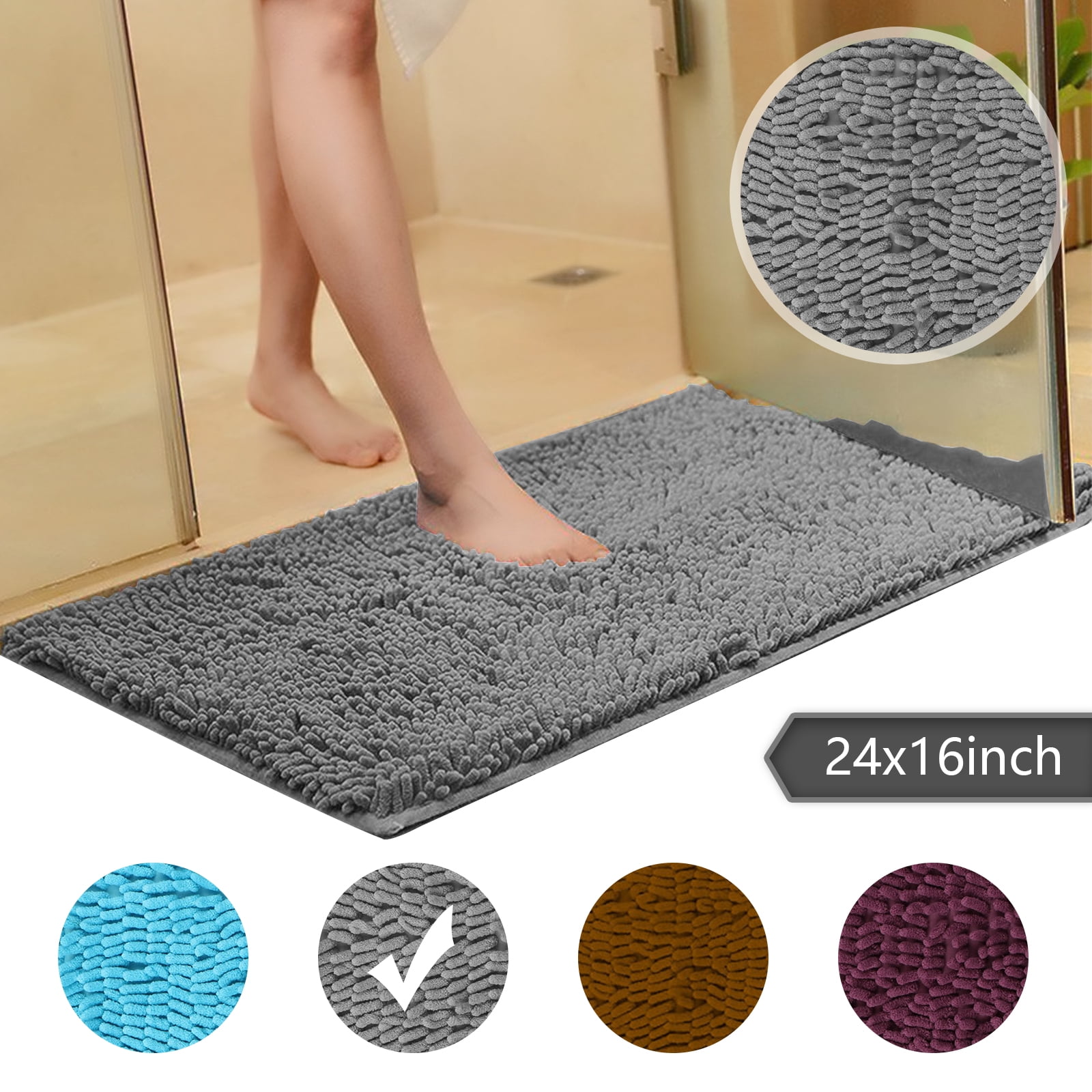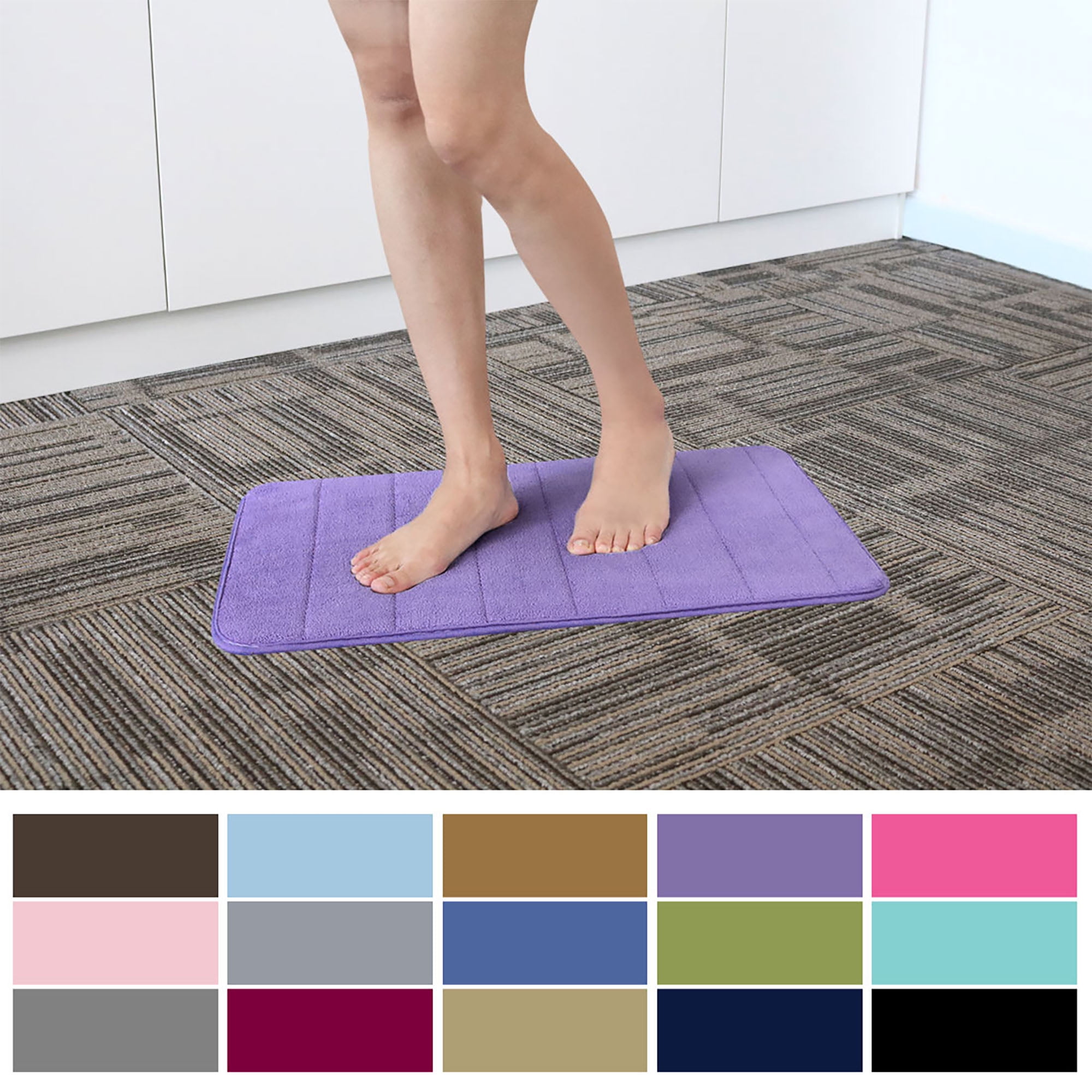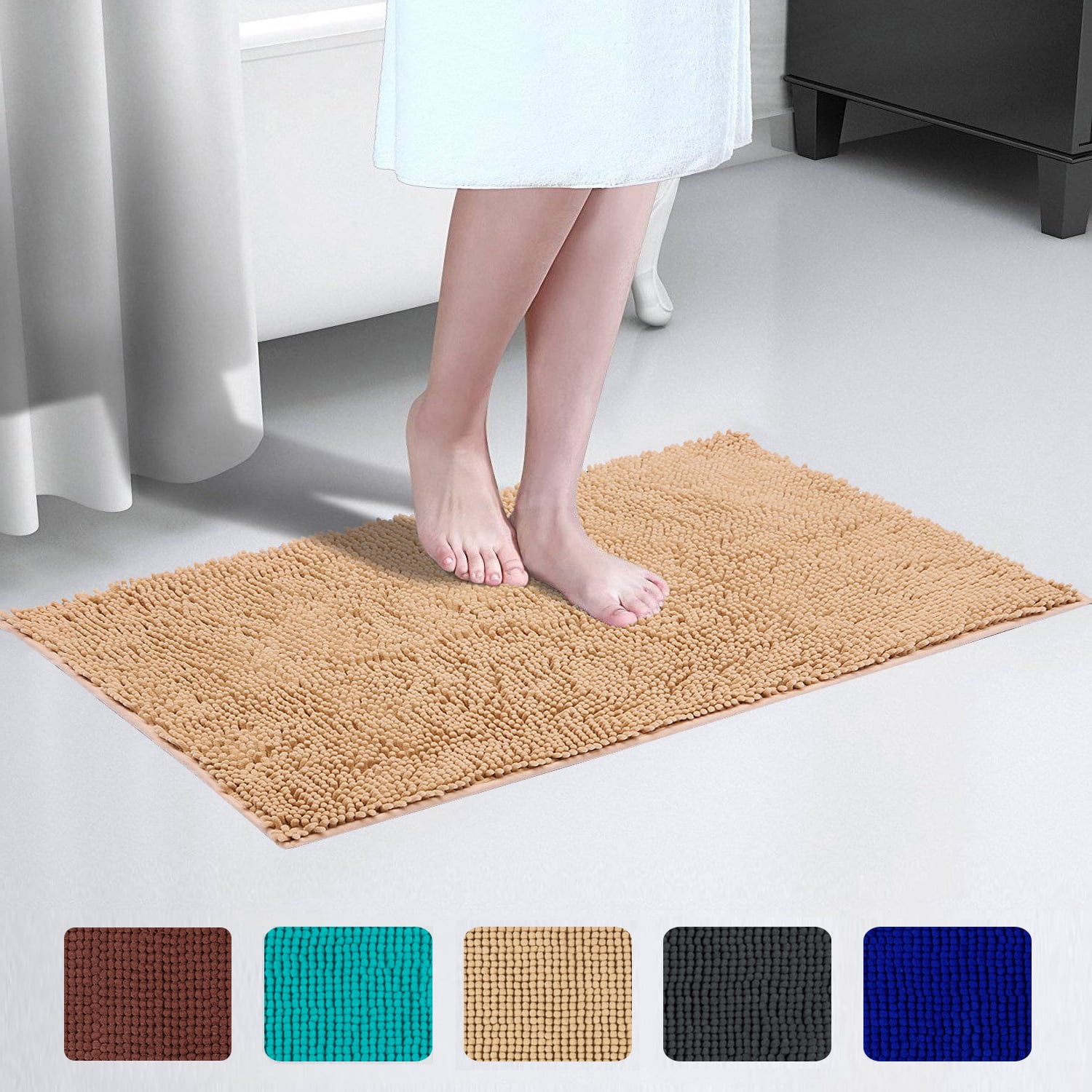Non-Skid Bathroom Rugs: Non Skid Bathroom Rugs

Bathroom safety is crucial, especially for individuals with mobility issues, seniors, and young children. Non-skid bathroom rugs play a vital role in preventing slips and falls, providing a secure footing on wet surfaces. These rugs are designed with specialized materials and backing to ensure stability and minimize the risk of accidents.
Materials Used in Non-Skid Bathroom Rugs, Non skid bathroom rugs
The material used in non-skid bathroom rugs significantly influences their durability, water absorption, and slip resistance. Here are some common materials and their properties:
- Microfiber: Known for its exceptional absorbency and quick-drying capabilities, microfiber is a popular choice for bathroom rugs. It effectively absorbs water and dries quickly, preventing slippery surfaces. However, microfiber can be prone to shedding and may require more frequent washing.
- Cotton: A natural and soft material, cotton is known for its comfort and breathability. It is also relatively affordable. However, cotton tends to absorb water readily, making it prone to mildew and mold growth if not dried properly. It also takes longer to dry than other materials, increasing the risk of slipping.
- Polyester: Durable and resistant to fading and shrinking, polyester is a popular choice for bathroom rugs. It is water-resistant and dries quickly, minimizing the risk of slipping. However, polyester can be less absorbent than other materials and may not feel as soft as cotton.
- Bamboo: A sustainable and eco-friendly option, bamboo is known for its natural antibacterial properties and moisture-wicking capabilities. It is also relatively soft and comfortable. However, bamboo rugs can be more expensive than other materials and may require more careful maintenance.
Types of Non-Skid Backing
The backing of a non-skid bathroom rug is essential for its slip resistance. Different types of backing offer varying levels of effectiveness and longevity:
- Rubber Backing: Rubber backing provides excellent grip and durability, making it a popular choice for non-skid bathroom rugs. It is resistant to water damage and can withstand frequent use. However, rubber backing can be more expensive than other options and may not be as flexible as PVC.
- PVC Backing: PVC backing is a cost-effective and flexible option for non-skid bathroom rugs. It is water-resistant and provides good slip resistance. However, PVC backing may not be as durable as rubber and can be prone to cracking over time.
- Suction Cups: Suction cups are commonly found on smaller bathroom rugs. They provide a secure grip on smooth surfaces like tiles, but their effectiveness can be affected by uneven surfaces or the presence of dirt or debris. Suction cups may also lose their grip over time, requiring replacement.
Choosing the Right Non-Skid Bathroom Rug

Choosing the right non-skid bathroom rug is essential for both safety and aesthetics. A well-chosen rug can enhance your bathroom’s design while providing a secure footing, minimizing the risk of slips and falls, especially on wet surfaces.
Factors to Consider When Choosing a Non-Skid Bathroom Rug
When selecting a non-skid bathroom rug, several factors play a crucial role in ensuring both functionality and aesthetic appeal.
- Size: The rug’s size should be appropriate for the space it will occupy. A rug that is too small can be easily shifted, defeating its purpose of providing stability. Conversely, a rug that is too large can create a tripping hazard and obstruct movement in the bathroom.
- Shape: The shape of the rug should complement the bathroom’s layout. Rectangular rugs are versatile and suitable for most bathrooms, while round or oval rugs can add a touch of elegance. Consider the available space and the overall design aesthetic when choosing a shape.
- Color: The rug’s color should harmonize with the bathroom’s color scheme. Lighter colors can brighten a space, while darker colors can add a touch of sophistication. Consider the existing colors of your bathroom fixtures, walls, and other accessories to create a cohesive look.
- Style: The rug’s style should reflect your personal taste and the overall design theme of the bathroom. Choose a style that complements the existing decor, whether it’s modern, traditional, minimalist, or eclectic. The style of the rug should also consider the functionality of the bathroom, for example, a more minimalist rug might be better suited for a smaller bathroom, while a more intricate design could be better suited for a larger space.
Types of Non-Skid Bathroom Rugs
Non-skid bathroom rugs come in various styles, each offering distinct features and benefits. Understanding the different types can help you choose the best option for your needs.
| Type | Features | Benefits | Drawbacks |
|---|---|---|---|
| Bath Mats | Small, rectangular rugs placed in front of the bathtub or shower | Provide a soft and absorbent surface to step on after bathing, reduce slipping on wet floors | May not be suitable for large bathrooms, can be easily moved, may not offer enough coverage for the entire wet area |
| Shower Mats | Larger rugs with textured surfaces designed for use inside the shower or bathtub | Offer excellent traction and grip, prevent slipping on wet surfaces, some are antimicrobial and mold-resistant | May not be as aesthetically pleasing as other rug styles, can be more expensive than other types, require regular cleaning and drying |
| Runner Rugs | Long, narrow rugs placed along the floor, typically in front of the vanity or along the side of the bathtub | Add a decorative touch to the bathroom, provide a comfortable surface to walk on, can be used in conjunction with other rug types | May not be as effective in preventing slips on wet floors as other types, can be difficult to clean if placed in high-traffic areas |
Checklist for Choosing a Non-Skid Bathroom Rug
When purchasing a non-skid bathroom rug, consider the following checklist to ensure you make a safe and aesthetically pleasing choice:
- Safety: The rug should have a non-slip backing and a textured surface to prevent slipping. Consider the rug’s material and its ability to withstand moisture without becoming slippery.
- Material: Choose a rug material that is absorbent, quick-drying, and easy to clean. Some popular materials include cotton, microfiber, and bamboo. Consider the material’s durability and its resistance to fading and wear.
- Size and Shape: The rug should be the right size and shape for the intended space. Consider the available space and the overall design aesthetic of the bathroom.
- Color and Style: Choose a rug color and style that complements the bathroom’s existing decor and reflects your personal taste. Consider the rug’s ability to harmonize with the existing colors and design elements.
Maintaining and Cleaning Non-Skid Bathroom Rugs

Proper maintenance is crucial for ensuring the longevity and effectiveness of non-skid bathroom rugs. Regular cleaning, appropriate drying techniques, and suitable storage practices contribute to preserving their quality and performance.
Cleaning Methods for Different Non-Skid Rug Materials
The cleaning method for non-skid bathroom rugs depends on the material. It is important to refer to the manufacturer’s instructions for specific cleaning recommendations.
- Microfiber Rugs: These rugs are generally machine-washable, but it is advisable to check the care label for specific instructions. Use a mild detergent and a gentle cycle. Avoid using bleach, as it can damage the fibers.
- Cotton Rugs: Cotton rugs can be machine-washed or hand-washed, depending on the rug’s size and weight. Use a mild detergent and a gentle cycle. For hand-washing, soak the rug in a tub of soapy water and gently scrub it with a soft brush. Rinse thoroughly and hang to dry.
- Polyester Rugs: Polyester rugs are typically machine-washable. Use a mild detergent and a gentle cycle. Avoid using bleach, as it can fade the colors.
- Rubber-Backed Rugs: These rugs often have a rubber backing that provides the non-skid feature. It is best to hand-wash these rugs with a mild detergent and lukewarm water. Avoid using harsh chemicals or bleach, as they can damage the rubber backing.
Removing Stains and Odors
Stains and odors can be removed from non-skid bathroom rugs using a few simple steps.
- Immediate Action: Address stains promptly to prevent them from setting in. Blot the stain with a clean cloth or paper towel to absorb excess moisture.
- Spot Cleaning: Use a mild detergent or stain remover specifically designed for the rug material. Apply a small amount of the cleaning solution to the stain and gently rub it with a soft brush.
- Rinse and Dry: Rinse the area thoroughly with clean water and allow the rug to air dry completely. Avoid using a washing machine for rugs with rubber backings, as the heat can damage the rubber.
- Ventilation: Ensure proper ventilation during the drying process to prevent mildew and odor development.
Drying Techniques
Proper drying is crucial for preventing mildew and odor development in non-skid bathroom rugs.
- Air Drying: Air drying is the most effective method for drying non-skid bathroom rugs. Hang the rug outdoors or in a well-ventilated area, ensuring that it is not exposed to direct sunlight.
- Machine Drying: Some non-skid rugs are machine-washable and can be tumble-dried on a low heat setting. However, always check the care label for specific instructions.
- Avoid Heat: Avoid using a hairdryer or other heat sources to dry the rug, as this can damage the fibers and the non-skid backing.
Storage Practices
Proper storage can help extend the life of non-skid bathroom rugs.
- Clean and Dry: Ensure the rug is clean and completely dry before storing it.
- Fold or Roll: Fold or roll the rug neatly to prevent creases and wrinkles.
- Ventilated Area: Store the rug in a cool, dry, and well-ventilated area.
